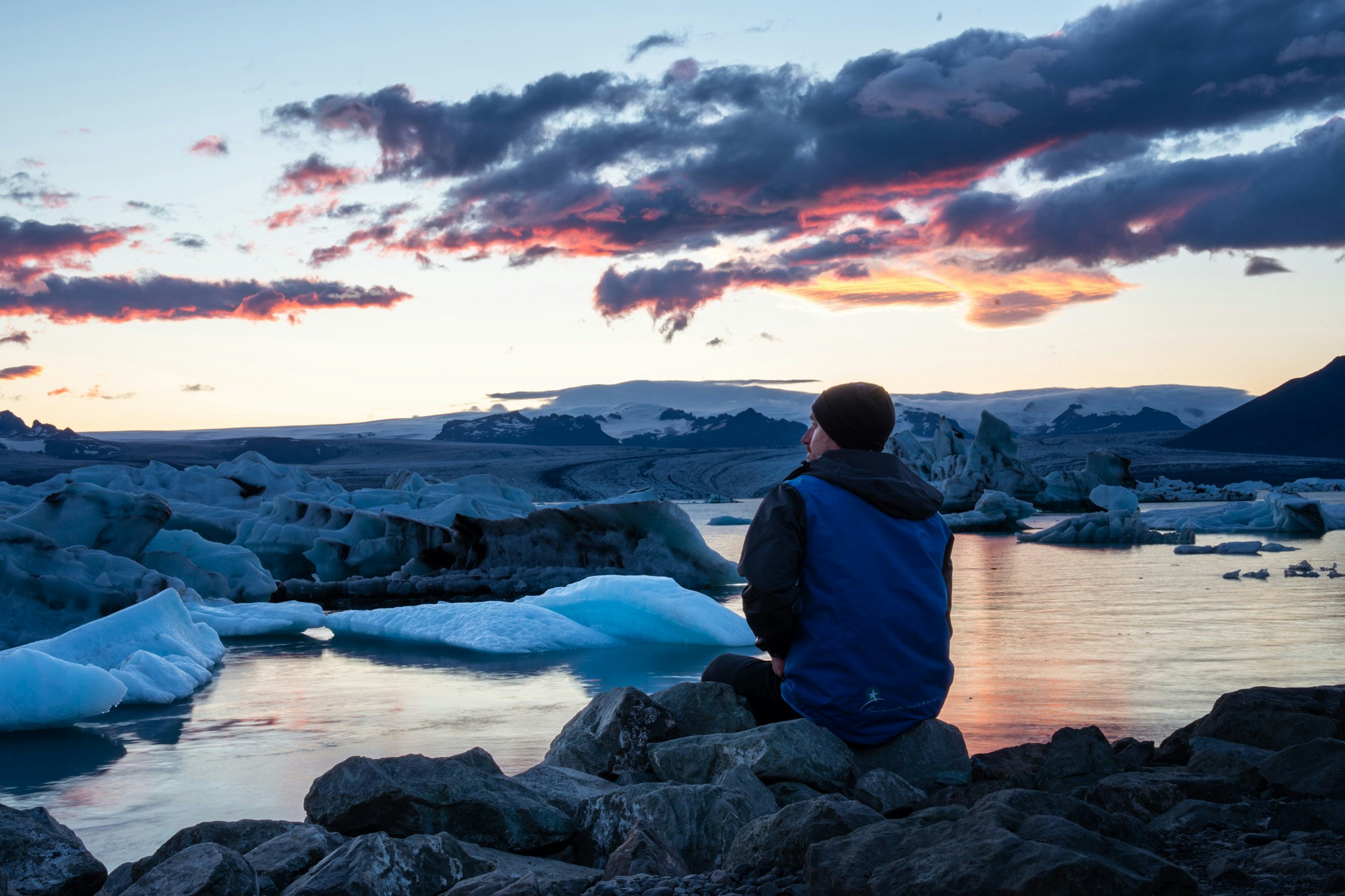The wonderful wildlife we're lucky to come across on our amazing voyages is one of the major draw cards for many guests. With its expansive tundra boasting an immeasurable amount of hiding places, sky-scraping cliffs and grassy-fringed ledges, the Arctic's many landscapes have become home to some of the world's most fascinating and beautiful birdlife.
In no particular (pecking) order, here are 10 of the beautiful birds you may see on your intrepid journey in the Arctic.
1. Atlantic puffin
Measuring just 10 inches in height and boasting a fluffy plumage of black and white feathers and recognisable rainbow beak, many would find it hard to find a more adorable seabird than the Atlantic puffin.
While small in size, the Atlantic puffin population is the complete opposite in the heart of Iceland. During the months of May and September, an estimated 60 per cent of the 12 million-strong Atlantic puffin population nest on the ledges that overlook the icy waters below.
Fun fact: The Atlantic puffin are the commitment type, staying with and reuniting with their partner every breeding season!
2. Arctic tern
The Arctic tern is a gold-medal winning seabird. Every year, this small bird makes the near 80,000 kilometre migration journey from the Greenland area to Antarctica - a distance equal to flying twice around the Earth!
During the summer months, the Arctic tern is abundant in coastal areas around Svalbard, but unlike the Atlantic puffin, these seabirds prefer to nest in burrows on the ground. With protective parents, opportunist predators don't stand much chance of landing dinner, especially with the tern's renowned dive-bombing tactic!
Fun fact: The Arctic tern sees more sunlight than any other animal on the planet!
3. Snowy owl
Unlike the Atlantic puffin and Arctic tern, the Snowy owl, otherwise known as the 'bubo scandiacus', is much more elusive. In fact, sources estimate that five to 10 sightings per year is a common occurrence. As its name suggests, this magnificent bird has the whitest of feathers, with only a pair of yellow eyes peeking through the plumage.
Such a high level of camouflage plays in their favour, especially when hunting unsuspecting lemmings.
Fun fact: Despite being spotted mostly in and around Iceland, the snowy owl is the official avian symbol of Quebec.
4. Stellar eider
Despite being a year-long resident of the Arctic, the stellar eider population is unfortunately declining due to climate change.
Therefore, viewing one in the wild makes it even more special. Males can be identified by their white head which is marked by a thick black eye-ring, and females by their all-over dark brown feathers.
Fun fact: Due to the burnt colouring of the males' underside, the stellar eider is known as 'the bird that sat in the campfire' by the Inupiat people.
5. White-tailed eagle
While there are several species of eagle that soar the Arctic sky, none are quite as impressive as the white-tailed eagle. Not only are they classed an apex predator, they also have the widest wingspan of any eagle in the entire world! As well as northern Europe and Asia, this majestic bird may be spotted around Greenland and Iceland - perfect to keep a lookout for when on our voyage!
Fun fact: The white-tailed eagle is the largest eagle in Europe!
6. Rock ptarmigan
Part of the pheasant and grouse family, the rock ptarmigan is one of the more docile birds found in the Arctic. 'Thunderbirds', as the Japanese like to call them, enjoy living in more mountainous areas where ridges and burrows keep them sheltered from predators. However, the males' distinct croaking call helps make spotting them a little easier.
Fun fact: The Svalbard rock ptarmigan is the only terrestrial bird residing in the archipelago throughout the year.
7. Snow bunting
With a length of 15cm and a weight of 30g, the snow bunting is just as pretty and delicate as its nickname 'snowflake' suggests. This sparrow-like bird may be seen flitting to and from nests, or flying in flocks around the headlands.
Fun fact: Come summer, the snow bunting's feathers acquire rusty tones to blend into the melted landscapes.
8. Great northern diver
As the name suggests, this next Arctic bird is an excellent diver. This, in part, can be put down to solid bones that give them added weight when diving in search of fish. They spend much of their time floating on the waters around Iceland, and their distinct black and white checkerboard body makes spotting them a breeze.
Fun fact: The great northern diver is thought to be the oldest and most primitive type of bird on Earth - about 20 million years old in fact!
9. King eider
Despite being the largest duck in the northern hemisphere, it's not the size of the king eider that you'll notice first. Their Latin name, 'somateria spectabilis' derives from the Greek word 'remarkable display' which refers to the vibrant plumage of male king eiders.
Despite their regal status, king eiders are sociable and known to form flocks in excess of 100,000!
Fun fact: During the incubation season, females rarely feed.
10. Little auk
While they also stand erect on land due to their legs being positioned at the rear of the body, don't confuse the little auk with a penguin. These black and white seabirds are great in their own right, as they contribute greatly to the ecosystem of the Arctic. Due to the sheer size of little auk populations, their vast carpet of droppings provides a nutrient-rich fertiliser that allows plant life to grow in what would otherwise be barren grounds.
Fun fact: Little auk breeding colonies are the largest of any auk species - with some reaching numbers in the millions!
An eager birder yourself? Learn about the fascinating and beautiful birds you may come across on our voyages with our onboard naturalists. Get in touch with our Expedition Experts to find out more.












.jpg?language=en&auto=format&w={width}&fit=cover)







